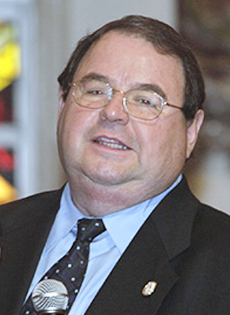
La celebración Eucarística después del Vaticano II
Monday, August 26, 2019
*Rogelio Zelada
El 3 de abril de este 2019 se cumplieron los primeros 50 años de la solemne afirmación del trabajo de la renovación litúrgica aprobada por los padres conciliares y firmada por el Papa San Pablo VI. El “Missale Romanum ex decreto Concilii Oecumenici Vaticani II instauratum” es el fruto de largas jornadas del Consejo Pontificio para implementar las normas generales emanadas de la “Sacrosantum Concilium”, la Constitución sobre la Liturgia.
El nuevo Misal llevó a cabo las directrices del concilio para la reforma de la liturgia de la Misa, según lo pedía la Sacrosantum Concilium #50: “Revísese el ordinario de la Misa, de modo que se manifieste con mayor claridad el sentido propio de cada una de las partes y su mutua conexión y se haga más fácil la piadosa y activa participación de los fieles. En consecuencia, simplifíquense los ritos, conservando con cuidado la sustancia; suprímanse aquellas cosas menos útiles que, con el correr del tiempo, se han duplicado o añadido; restablézcase, en cambio, de acuerdo con la primitiva norma de los santos Padres, algunas cosas que han desaparecido a causa del tiempo, según se estime conveniente y necesario”.
El nuevo Misal no contenía, como el tridentino, las lecturas bíblicas, sino un excelente catálogo de lecturas de la Sagrada Escritura que, recogidas en nuevos leccionarios, aumentarán no solo el número de lecturas dominicales y la recuperación del salmo responsorial, sino además la distribución de éstas en tres años, enmarcada por los evangelios sinópticos.
El nuevo Misal de Pablo VI presenta una gran preocupación pastoral por la asamblea, primer actor de la celebración; una comunidad de creyentes presidida por Cristo, cuya presencia la invade por completo. El pueblo de Dios es llamado a participar en el santo sacrificio de la Misa de manera plena, activa y consciente; la celebración de la Eucaristía aparece como el banquete de la asamblea presidida por el obispo o el presbítero: representantes del Cristo-cabeza viviente. La presencia del obispo en una ceremonia ya no debe suponer una mayor solemnidad en el rito, sino la expresión más clara del misterio de la Iglesia, “que es sacramento de unidad”. (SC 26).
La reforma litúrgica propone la designación de ministros y ministerios otorgados a laicos que respondan a la estructura de la comunidad celebrante. Destaca la importancia del lector en la liturgia de la palabra, del cantor, del salmista y de los ministros del altar, con la posibilidad de crear nuevos ministerios según sea conveniente y necesario o lo exija las necesidades de la iglesia local.
La intención fundamental del Concilio fue recuperar las fuentes originales que dan sentido a los ritos del culto católico; resaltar lo esencial eliminando los gestos añadidos a lo largo de la historia; y recuperar aquellas formas y signos que se habían perdido. Para ello reconstruyó el marco celebrativo teniendo como modelo funcional las antiguas basílicas cristianas: el altar del sacrificio se separó del retablo para expresar su lugar central en la celebración eucarística, una mesa circundable en la que se puede celebrar de cara al pueblo y enriquecer el diálogo y la comunicación entre el que preside y la asamblea; la sede presidencial tomó un sitio privilegiado como para visibilizar la presencia de Cristo en el obispo o el presbítero, con asientos para los diáconos a cada lado; el ambón para proclamar solemnemente la Sagrada Palabra de Dios; todo un extraordinario encaje litúrgico para visibilizar la presencia real de Cristo en estos signos visibles y permanentes.
Todo tal como lo pedían los principios orientativos del Concilio, que presenta la liturgia de la Iglesia como el “ejercicio del sacerdocio de Jesucristo”. Cristo es el centro, el Señor muerto y resucitado que nos da la auténtica vida. La liturgia no es otra cosa que la gran celebración creyente del misterio pascual de Cristo, el tremendo misterio que continúa en el tiempo y en la historia la constante presencia del Señor en su Iglesia que en él invoca a su Señor y por él tributa culto al padre de los cielos.
San Juan XXIII, en su discurso de convocación al Vaticano II, reconocía que “Hay hombres de buena voluntad, pero de espíritu cerrado, para quienes todo es malo en nuestra época; creen que todo tiempo pasado fue mejor. Disentimos de estos profetas de calamidades que siempre vaticinan cosas peores. No estamos al borde del abismo, porque estamos en manos de la Providencia”. El Santo Papa intuía que habría disensiones e inconformidades con el propósito, los trabajos y los resultados del Concilio. Los hubo en el Vaticano I, con el resultado de la escisión sectaria de algunos obispos alemanes y franceses y la aparición de los “Viejos Católicos”, una iglesia que en América se ha llamado los “católicos liberales”, ya muy alejada de la ortodoxia de la Iglesia Romana.
Le tocó a San Pablo VI la conclusión de las tareas conciliares y la promulgación de sus grandes constituciones, documentos y decretos. Los principios orientativos de la Constitución Sacrosanctum Concilium consideran a la liturgia como el ejercicio del sacerdocio de Cristo, cumbre y fuente de la vida cristiana, que requiere de toda la Iglesia una participación plena, consciente y activa, porque manifiesta la naturaleza de la Iglesia que es esencialmente comunidad, con una unidad sustancial, no uniformidad rígida, que pueda conservar la sana tradición y a la vez el legítimo progreso del lenguaje de la Fe, porque es teología hecha oración, que teniendo a Cristo como centro, significa y realiza la santificación de los hombres y mujeres que forman la Iglesia.
San Juan XXIII legó su estilo y su espíritu a la reforma litúrgica. Un santo de enorme sentido común y amplísima visión, a pesar de su avanzada edad, llenó de aire fresco y espíritu renovador las antiguas estructuras y tradiciones que tanto han lastrado la imagen de las instituciones eclesiales. Se cuenta que, recién elegido Papa, pidió a su secretario que invitara a unos amigos a cenar con él en la casa apostólica. El secretario le contestó: “Imposible, el Santo Padre siempre debe comer solo”.
El Papa Roncalli le preguntó asombrado: “¿Y esto a qué se debe?”
La respuesta: “Porque uno de sus predecesores lo instituyó así”.
“¿Y era Papa como yo?”
“Ciertamente, así es”.
“Pues como yo también soy Vicario de Cristo, como lo fue ese Papa, yo lo anulo ahora mismo. Así que mañana y de ahora en adelante, el Papa no volverá a comer solo”.
Esa es la riqueza de la Iglesia, la capacidad de hacer como aquel padre de familia del Evangelio, que es capaz de sacar de su arcón lo viejo y lo nuevo, en beneficio del pueblo de Dios.


Comments from readers